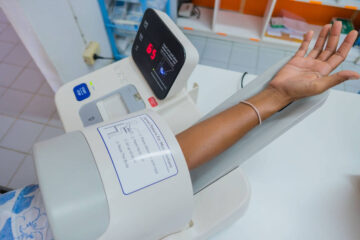If you are considering dental implants as a solution for missing teeth, you likely have numerous questions about what the procedure involves. Dental implants are renowned for their durability and ability to replicate the look, feel, and function of natural teeth. This comprehensive guide will walk you through each step of the dental implant process, from the initial consultation to the final placement, to help you understand what to expect and prepare for the journey ahead.
Step 1: Initial Consultation
The first step on your dental implant journey is an initial consultation with your dentist or oral surgeon. This appointment is crucial as it serves several purposes:
- Medical History Review: Your dental professional will review your medical and dental history to identify any conditions that could affect the success of the implant procedure.
- Dental Examination: A thorough examination of your mouth, teeth, gums, and jawbone is conducted to assess the feasibility of implants. This may include X-rays or 3D images to evaluate bone density and determine the optimal placement for the implants.
- Treatment Planning: Based on the findings, your dentist will discuss the best treatment options. If dental implants are suitable, they will provide a detailed plan including the timeline, the number of appointments required, and the steps involved.
Step 2: Pre-Procedure Preparations
In some cases, preparatory procedures may be necessary before placing the implants. These might include:
- Tooth Extraction: If you have remaining tooth fragments where the implant will be placed, these will need to be removed.
- Bone Grafting: If your jawbone isn’t thick enough or is too soft, bone grafting might be required to provide a more solid base for the implant.
Step 3: Implant Placement
The actual implant placement is a surgical procedure, typically performed under local anesthesia. Here’s what happens:
- Anesthesia: Local anesthesia is administered to numb the area where the dental implant will be placed.
- Incision: A small incision is made in your gum to expose the bone where the implant will be inserted.
- Drilling: A space is carefully drilled into the bone to place the titanium implant post, which acts as the new tooth root.
- Implant Insertion: The implant is securely placed into the drilled hole. Once in place, the gum is sutured closed over the implant to allow it to heal and integrate with the bone.
Step 4: Healing and Osseointegration
After the implant is placed, the healing process begins. Osseointegration, where the jawbone grows into and unites with the surface of the dental implant, is critical for the stability of the implant. This process can take several months, during which you might have a temporary denture for cosmetic reasons.
Step 5: Abutment Placement
Once osseointegration is complete, you will need another minor surgical procedure to place the abutment:
- Reopening the Gum: The gum is reopened to expose the dental implant.
- Abutment Attachment: The abutment, which will hold the artificial tooth, is attached to the implant.
- Gum Healing: The gum tissue is then allowed to heal around the abutment for about two weeks.
Step 6: Artificial Tooth Placement
The final step in the dental implant process is the placement of the artificial tooth. Once your gums have healed:
- Dental Impressions: Impressions of your mouth and remaining teeth are taken to create the artificial tooth.
- Tooth Fabrication: A dental lab uses the impressions to fabricate the crown, bridge, or denture that will be attached to the abutment.
- Fitting and Adjustment: The new tooth is securely fitted onto the abutment and adjusted if necessary to ensure a comfortable and natural fit.
Aftercare and Follow-up
Following the procedure, you may experience some typical discomforts, such as swelling, bruising, minor bleeding, and pain at the implant site. Your dentist will provide instructions on how to manage these symptoms and ensure a smooth recovery. They will also schedule follow-up visits to monitor the implant, adjust the fit, and check for any potential problems.


